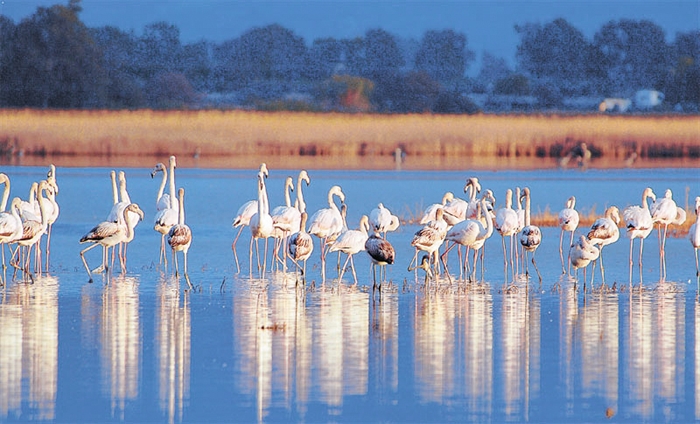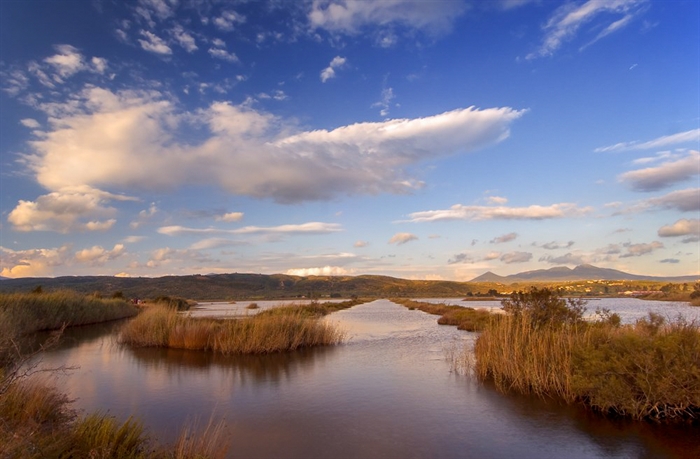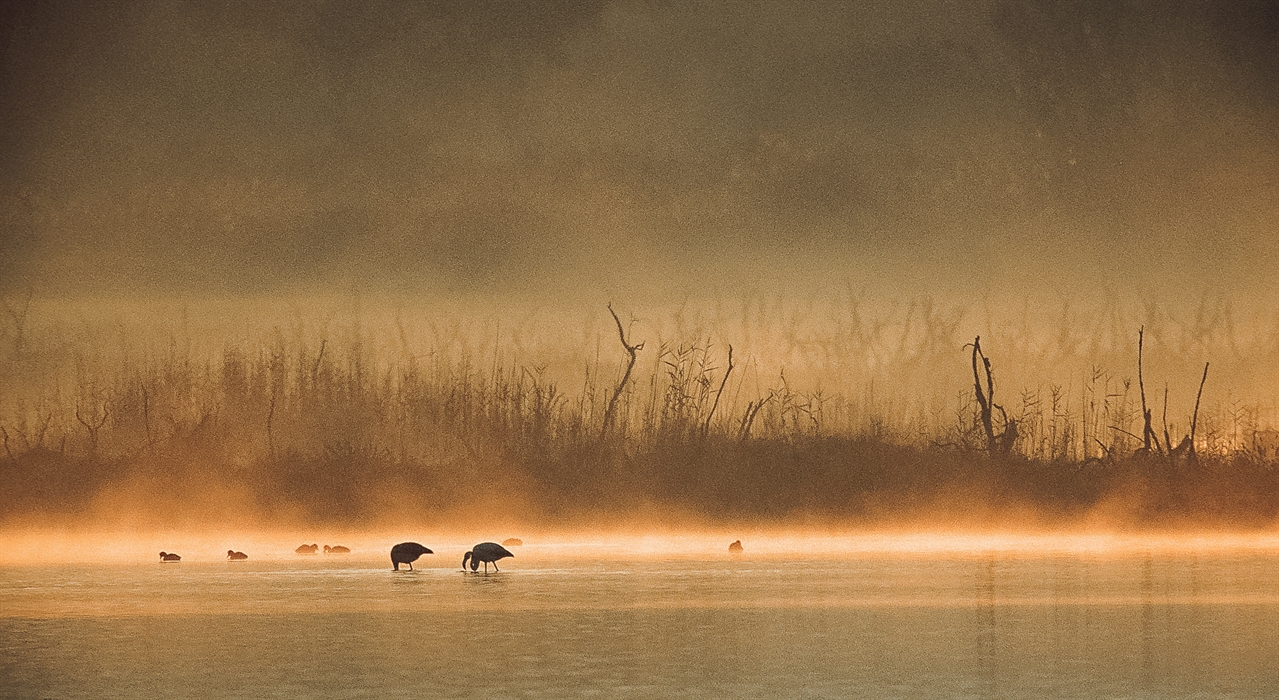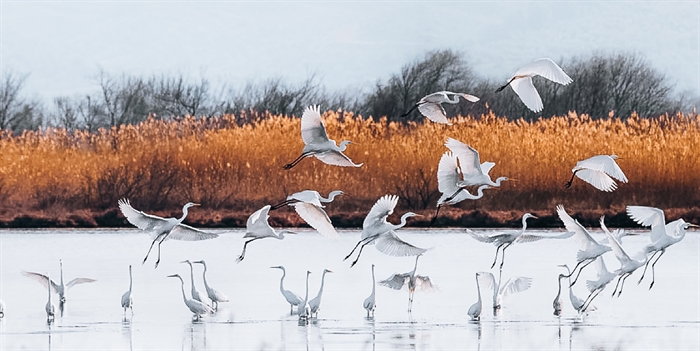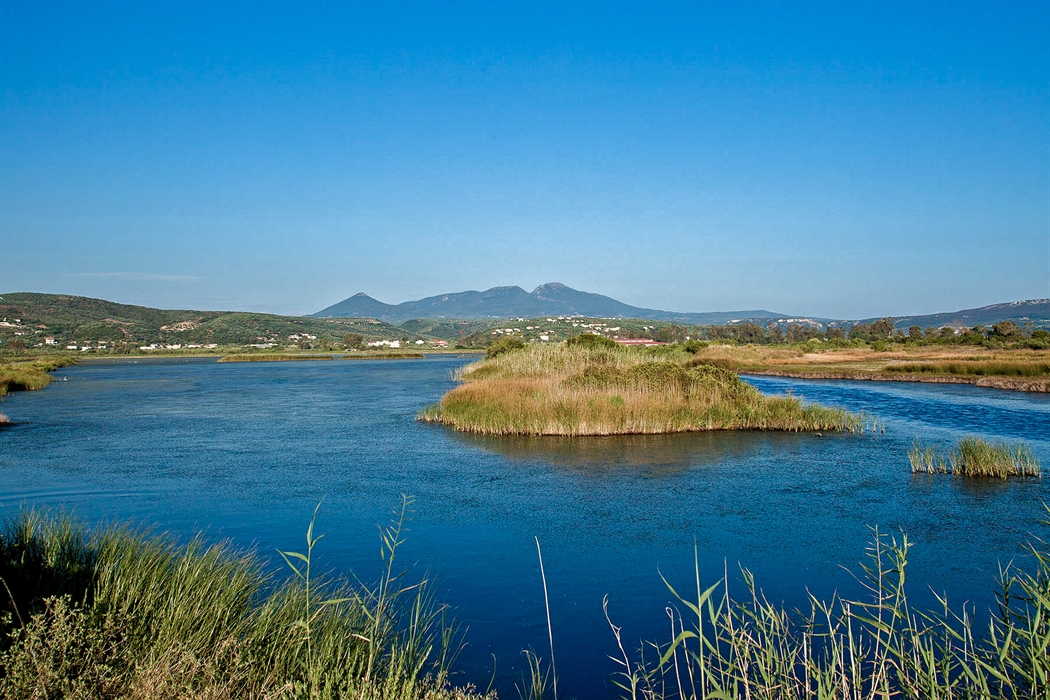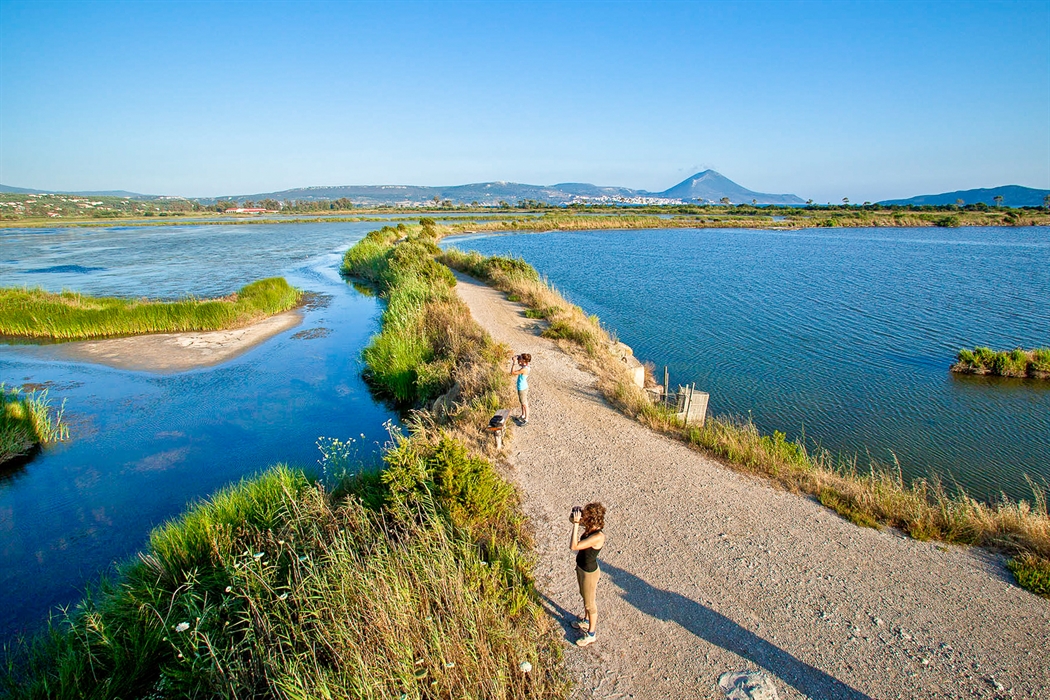The Gialova lagoon
With all its history and its beautiful beaches, it’s sometimes easy to lose sight of the variety of ecosystems, wildlife and habitats in Greece. But, from flamingos to chameleons, there is plenty to see in the southwest of the Peloponnese where four different habits have been included in the European Natura 2000 network.
With all its history and its beautiful beaches, it’s sometimes easy to lose sight of the variety of ecosystems, wildlife and habitats in Greece. But, from flamingos to chameleons, there is plenty to see in the southwest of the Peloponnese where four different habits have been included in the European Natura 2000 network. This stretch includes the ecosystems in the Gialova lagoon, the beach at the bay of Voidokoilia, Navarino Bay and the island of Sfaktiria which are all particularly important for Greece. This whole area is also one of the most interesting sights in the Peloponnese.
The Gialova (or Divari) lagoon 5 km northwest of Pylos is on an important migration route for birds (Mediterranean - Black Sea) and is their first stop in Europe after a marathon flight of 3,000 km over the Sahara and the Mediterranean. Naturally, it is also their last stop before they return to central west Africa for the winter. On top of this, it is the southernmost wetlands in the Balkans, so it’s not surprising that its international importance has been recognised. It has been designated a "Special Protection Zone" and an 'Important Bird Area', one of the few on the southwest coast of Greece.
It is also the only place in Europe where the African chameleon (Chameleo africanus) lives and breeds. They really do change colour, both for camouflage and to communicate with each other. They feed on insects, live up to 2 years, and lay 40 to 50 eggs in the sand in autumn. The shallow brackish lake is surrounded by sandy beaches, salt flats, brackish marshes and tamarind forests. The Xerolagados stream and the Tyflomytis springs feed the lagoon with fresh water, while depending on the ebb and tide, sea water also flows into it. The interaction between fresh and salt water creates a sensitive and dynamic ecosystem, fostering a diversity of vegetation and habitats that make the area ideal for birds and other wildlife. Gialova is home to endemic and rare plant species, and 271 species of birds, 34 species of reptiles, 28 species of mammals and 16 species of fish have been recorded in the lagoon. Some of the birds to watch out for here are various species of herons, the rare Eurasian dotterel, bar-tailed godwits, little egrets, great egrets, flamingos, cormorants, ospreys, little bitterns and stonechats.
The bay of Voidokoilia is another important habitat which is constantly being re-formed due to the interaction between the wind and the sea. Caretta caretta (loggerhead) sea turtles breed here.
Bird watching
There are two closed birdwatching hides in the area, one on the way to the Gialova lagoon and one in Voidokoilia. There is also a high open-air hide in the lagoon. If you want to go for a walk, there is a circular nature trail that begins at the Ornithological Society Information center at the old pumping station. This trail takes you on a walk around the perimeter of the lagoon so you can get to know the various different habitats. It is well signposted and it is important that you follow the rules to avoid scaring the birds. Take your binoculars with you!
Did you know that
There are a lot of environmental education and awareness raising activities arranged around the Giavola lagoon. The aim is to help everyone understand how valuable the natural environment is and how important it is that we preserve and protect nature.
Gialova has also been designated an archaeological site, along with Voidokoilia. The vaulted tomb of Thrasymidis was discovered to the north of the beach, and on the south side, below the medieval Palaiokastro, is Nestor's Cave where traces of habitation from the Neolithic period were discovered.
Location
Find the destination on the interactive map below.
Σχετικό περιεχόμενο χρηστών (UGC)
Ενημερωθείτε για ενδιαφέροντα θέματα γύρω από τον προορισμό μέσα από το περιεχόμενο των χρηστών μας
Discover 7 hidden gems of the Peloponnese
Many of you may have already visited some of the most renowned attractions…
TOP 10 archaeological museums in the Peloponnese
Olympia, Mycenae, Epidaurus, Diros Cave, Ancient Corinth, Messene and…
TOP 10 Castles in the Peloponnese
Castles galore! Mystras, Monemvasia, Palamidi, Methoni, Koroni,…
Newsletters
- About us
- FAQ's
- Map
- Tourism information centers
- Disclaimer
- Sitemap
- Our brand
- Media roum
- Adding your bussiness
- Corporate
- MICE

Peloponnese. Greece beyond the obvious





Design and creation from Cosmote
Marinas and Moorings
Diving centers
Get inspired
- Media gallery
- Blog
- The Peloponnese in the media
- Your feedback
- Users' general content
- Users' local products
- Users' events content
- Ask a local
More
- Accommodation
- Travel agencies
- Restaurants
- Services
- Destinations Map
- Weather
- Public transport
- Events
- Frequently asked questions
- Useful phones
- B2B
- Destination Data
- Contact

